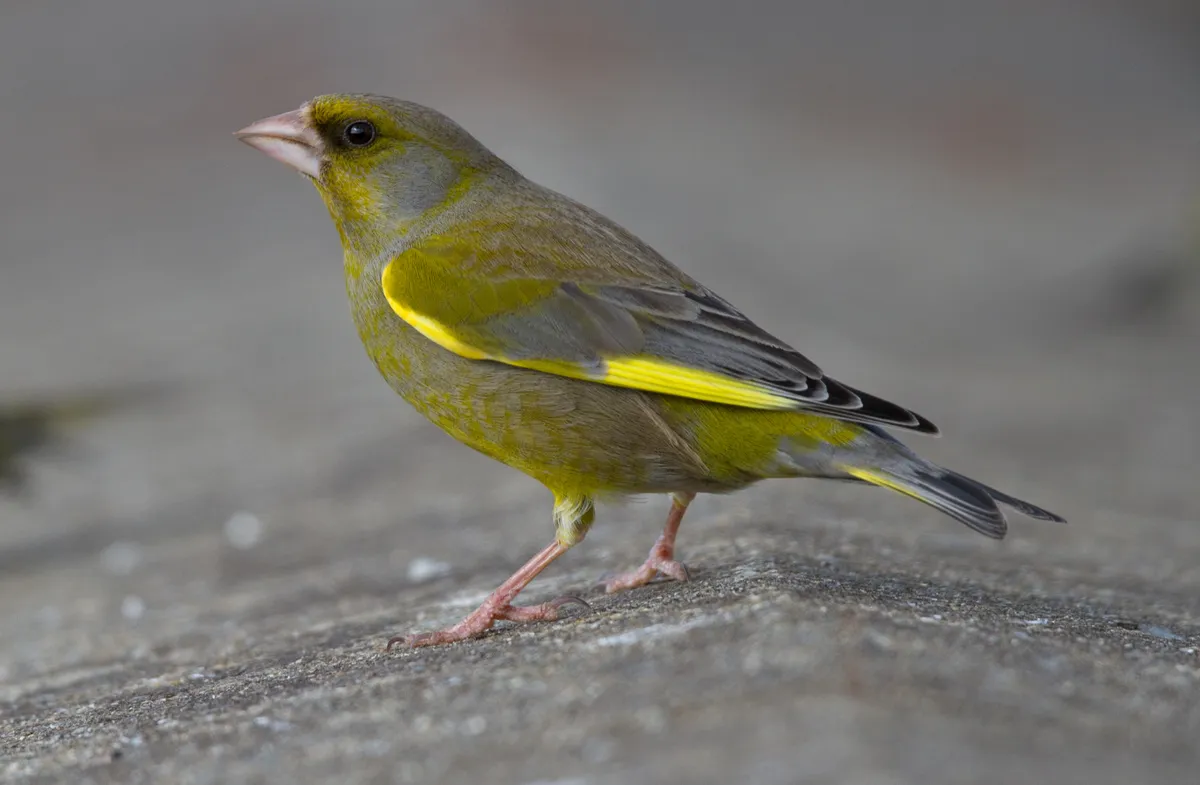Britain’s disappearing finches – how to do your bit to help protect them

Some of Britain’s best loved birds are facing a worrying decline in population – now gardeners have been told how they can help safeguard their numbers.
Ecologists at Arbtech have issued a stark warning to UK households as it’s reported that bird populations, particularly finches, are in drastic decline due to a growing new disease.
[Image credit: Getty]
Trichomonosis (Trichomonas gallinae) is a parasitic disease that impacts a bird’s digestive system, particularly affecting finches, doves and pigeons. However, any bird can catch the infection.
The disease was first detected in the UK around 20 years ago and is thought to have wiped out millions of birds since then – particularly greenfinches, chaffinches, and dunnocks.
Its devastating impact even pushed greenfinches from a green-listed species straight to the red list by 2021.
Trichomonosis is transmitted through saliva, meaning infected birds can easily pass it on to others when sharing food and water sources, and dirty feeders can be a hotspot for infection.
Birds infected with ‘trich’ become weak and immobile as the cankers in their throats make swallowing difficult. As a result, they repeatedly chew and attempt to eat but end up spitting or coughing up food.
If other birds are feeding nearby, they may pick up these contaminated pieces and become infected as well. Parent finches can also pass the disease to their young when feeding them, which further accelerates its spread within bird populations.
Fortunately, good garden hygiene can help, and one of the most effective ways to reduce the risk and help out local bird populations is by cleaning bird feeders and birdbaths regularly.
Washing feeders with a diluted disinfectant solution or boiling water at least once a week helps kill any lingering parasites.
Birdbaths should also be cleaned frequently to prevent birds from drinking contaminated water.
Good garden hygiene can also help to prevent other prevalent bird diseases like those caused by mites, which can survive on feeders and hop onto visiting birds.
Annabel Sharpe, resident bird expert at ecology consultancy Arbtech commented: “Trichomonosis has had a devastating impact on bird populations over the last two decades, and it remains a significant problem today.
“That’s why it’s so important for households to do their part by keeping bird feeders and birdbaths clean.
“So far, there’s no known link between feeders and bird flu – thankfully – as bird flu doesn’t appear to affect songbird populations.
“However, simple steps like regularly washing feeders, rotating feeding spots, and preventing overcrowding can make a huge difference in reducing the spread of other infections, such as trichomonosis, as well as those caused by mites.
“It doesn’t take much effort, but good garden hygiene helps protect the birds that visit our gardens, keeping them healthy for years to come.
“By setting aside just a few minutes each week to clean feeders and watch for signs of illness, we can all play a role in safeguarding our local bird populations.”
How to keep birds safe and avoid spreading disease:
Clean bird feeders and birdbaths regularly
One of the most effective ways to reduce the risk of spreading contagious diseases amongst garden birds is by cleaning bird feeders and birdbaths regularly. Dirty feeders can become hotspots for infection, as saliva from an infected bird can contaminate the food, allowing the parasite to spread to healthy birds. Washing feeders with a diluted disinfectant solution or boiling water at least once a week helps kill any lingering parasites. Birdbaths should also be cleaned frequently to prevent birds from drinking contaminated water.
Rotating feeding areas
Rotating feeding areas is another important step. Moving feeders to different locations in the garden reduces the buildup of droppings and saliva in one spot, lowering the chances of transmission. It’s also advisable to use multiple small feeders rather than one large one, as this reduces crowding and minimises contact between birds.
Spot sick birds
Gardeners should also be vigilant for signs of sick birds, such as fluffed-up feathers, difficulty swallowing, or lethargy. If an infected bird is spotted, it’s best to temporarily remove feeders and water sources for at least two weeks to encourage birds to disperse and prevent further spread.
Provide natural food sources
Providing a varied natural food source by planting bird-friendly shrubs and flowers can help reduce dependency on feeders. This encourages birds to forage naturally, decreasing the likelihood of disease transmission in concentrated feeding areas.






